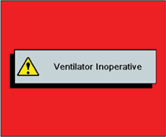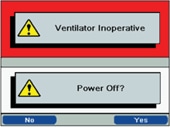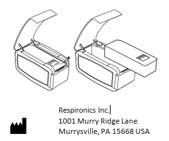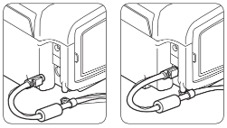Urgent Product Defect Correction in Australia
Philips Respironics A40/A30 BiPAP Series – Australia
All serial numbers
Philips, following consultation with the Therapeutic Goods Administration (TGA), is conducting an update to the Urgent Product Defect Alert of Philips A40/30 BiPAP Series sent in April 2024. This action is now classified as an Urgent Product Defect Correction and includes additional customer actions and remediation being taken by us.The affected products feature a Ventilator Inoperative alarm, which occurs when the ventilator detects an internal error or a condition that may affect therapy. This may manifest in the following ways:
OR
Update: Based on feedback from global regulators, Philips Respironics is issuing this letter as an additional update to the previous notice. For patients who cannot tolerate interruption or loss of therapy, including patients who use a BiPAP A40 Pro device for more than 8 hours a day and/or who are invasively ventilated, an alternative ventilator is required. This determination should be made under the guidance of a physician.
The following update and actions as previously communicated are still applicable:
Philips Respironics is clarifying the labeled intended use of the BiPAP A40 and BiPAP A40 Pro by removing “Respiratory Failure.” Refer to Appendix A1 (Click here for a copy)
Note: Philips Respironics is not pursuing design changes relevant to these products for this problem.
Customer Action:
In Australia, Philips Australia has been contacting affected customers and patients regarding the remediation. This includes replacement with an alternate Philips device or alternative options. If you still have active devices in your possession, please review this update and if you have not yet done so, please contact Philips Customer Support on 1800 830 517 or email clinical-philips@easyconnectsrc.zendesk.com to organise a suitable remediation.
What is Philips doing?
Philips Respironics is clarifying the labeled intended use of the BiPAP A40 and BiPAP A40 Pro by removing “Respiratory Failure.” This clarification is intended to prevent potential misinterpretation as the product is not designed or intended for life support applications. For further information on the clarified intended use, please see Appendix A1: Intended use for BiPAP A40 BiPAP A40 Pro devices only. Based on patient conditions, Philips Australia will offer the following remediation options to users: 1. Options for patients who Can Tolerate interruptions in therapy 2. Option for patients who Cannot Tolerate interruptions in therapy
What should patients do?
1. For Patients Who Can Tolerate Interruptions of Therapy: 2. For Patients Who Cannot Tolerate Interruptions of Therapy:
- Instructions on Performing a Hard Reboot
-
You (or someone taking care of you) can perform a “hard reboot” (or restart) on your ventilator which may allow for temporary usage of the device until you can be placed on an alternative ventilator.
If a Ventilator Inoperative alarm occurs, the display screen turns red and the Ventilator Inoperative message appears on-screen, as shown below.

Warning: Immediately remove the patient from the ventilator and if required, connect them to an alternate source of ventilation. Contact your home care equipment provider for service.
Meanwhile, as an option you may follow these steps to try to temporarily restore ventilatory function while waiting for a replacement device and/or professional medical intervention.
1. Power off the therapy device.
- Press the Start/Stop button.

- If the ventilator display is operational, the “Power Off” confirmation screen will appear, as shown below.

- Select the button on the right side, “Yes” to shut off the device and silence the alarm.
2. Unplug the power cord from the wall or from the device itself.
3. Remove the battery from the therapy device.
Detachable Battery Pack
- If the detachable battery pack is used, open the battery compartment at top of the detachable battery module accessory.
- Lift battery out using release lever on top of the battery (see below).

Li Ion Battery Pack
- If an external battery pack is used, unplug the battery pack cord from the back of the ventilator (see below).

4. Leave the battery disconnected from the ventilator for at least 30 seconds.
5. Reconnect the applicable battery in use.
6. Plug the power cord in to the wall or to the therapy device itself.

7. Power on the device by pressing the Start/Stop button

8. Once the ventilator powers back on, therapy may be restarted.
- Press the Start/Stop button.
What should health professionals do?
Philips Respironics is recommending that physicians/healthcare professionals assess whether the patients under their care are able to tolerate interruptions of therapy to help ensure that they continue to receive the most appropriate therapy. 1. For Patients Who Can Tolerate Interruptions of Therapy: 2. For Patients Who Cannot Tolerate Interruptions of Therapy:
